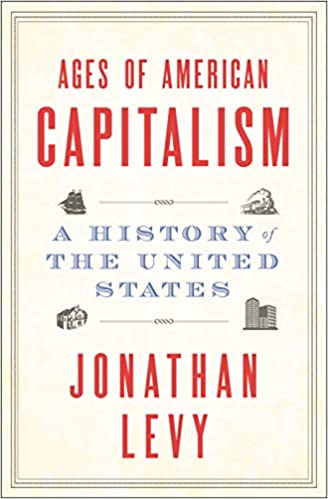You have /5 articles left.
Sign up for a free account or log in.
 Ages of American Capitalism: A History of the United States by Jonathan Levy
Ages of American Capitalism: A History of the United States by Jonathan Levy
Published in April 2021
2U buying edX took me totally by surprise.
I like to think of myself as at least sort of clued in about the online learning ecosystem.
The fact that I could have so little foresight into this OPM-platform story is usefully humbling.
As it happens, the time when the 2U/edX news was announced coincided with my wrapping up reading Ages of American Capitalism.
This book took me a while to read. The hardcover edition runs to 944 pages. I got through the book by going back and forth between the audiobook (31 hours, 44 minutes) and the ebook.
Students of U.S. economic history will be deeply gratified by reading Ages of American Capitalism.
The book is long, but it moves along quickly -- providing the right amount and combination of micro-level storytelling and macro-level analysis.
Learning U.S. history from the perspective of economic life (from the jobs we do to the goods we consume) is highly rewarding, as an economic lens on historical change makes this story feel tangible and relevant.
This single-volume economic history of the U.S. may also be the right book at the right time to help us make sense of why nonprofit higher ed seems to be running toward for-profit online education companies.
From the perspective of the full sweep of American economic history, we should not be surprised that nonprofit universities are increasingly partnering with (or selling assets to) for-profit companies.
The economic trajectory we've all been on over the past 50 years or so is one of a shift from public to private, nonprofit to profit, social to market. Our economic system has been designed to privilege capital over labor, wealth over wages and shareholders over workers.
Ever-increasing levels of economic stratification and wealth concentration result from explicit political and policy choices and decisions that we collectively make through voting, legislation and regulation.
In our world of higher education, these choices play out in the diminishment of public funding for public colleges and universities (particularly at the state level) and a proportional shift of the higher education cost burden to students. (See the growth of student debt.)
The growing involvement and impact of for-profit education companies, particularly in the online learning space, is another data point in a broader economic story.
Online education growth today is as much driven by investors' beliefs as it is the missions of universities.
The focus of those investment dollars has shifted from for-profit universities to nonprofit/for-profit partnerships, even as the overall level of investment capital flowing into the postsecondary system has impressively grown.
Do we need to read a (superb) 944-page economic history book to understand how we have arrived at a place where for-profits dominate much of our thinking about the future of higher education? Probably not.
But the broader story of how we got to this point is instructive, if only for the goal of making sense of where we might want to go next.




